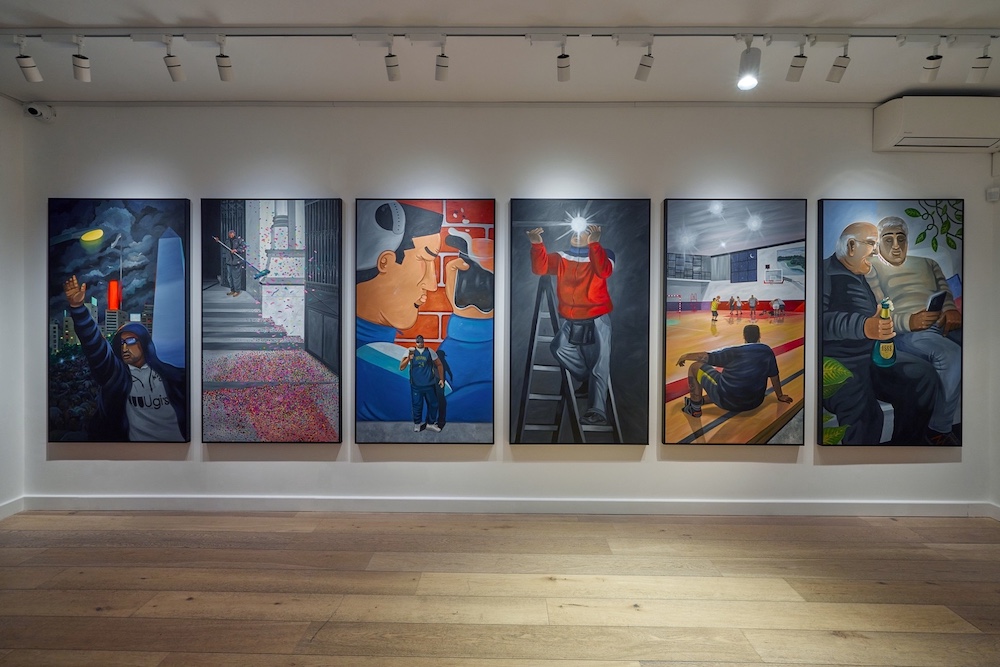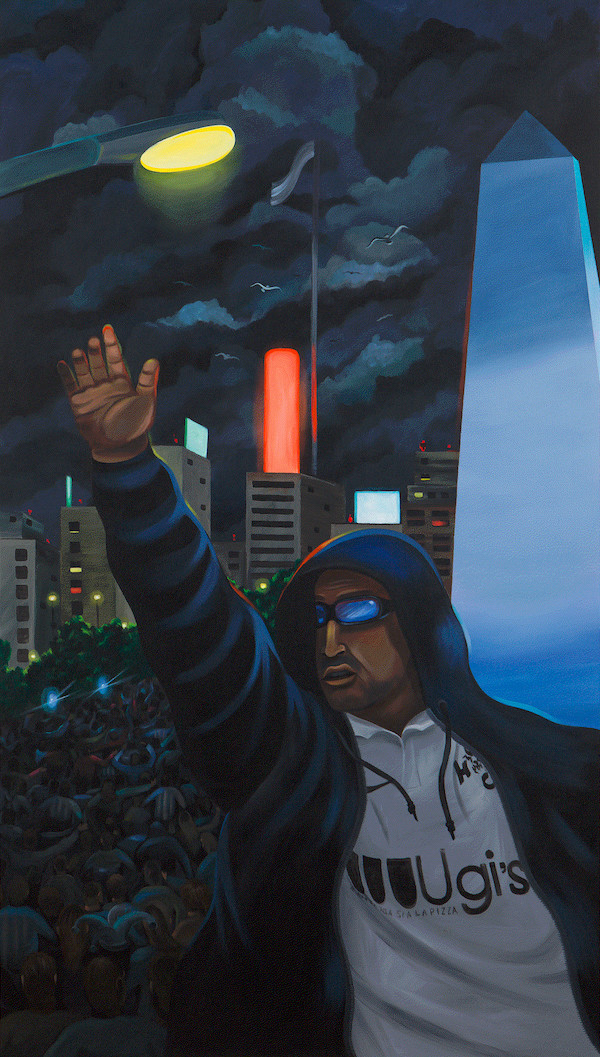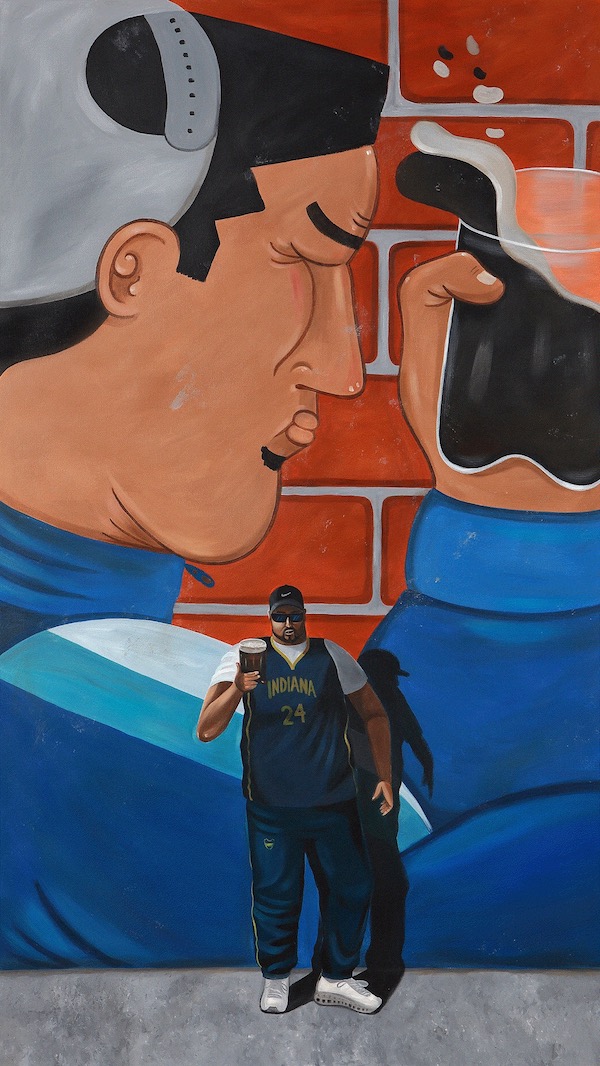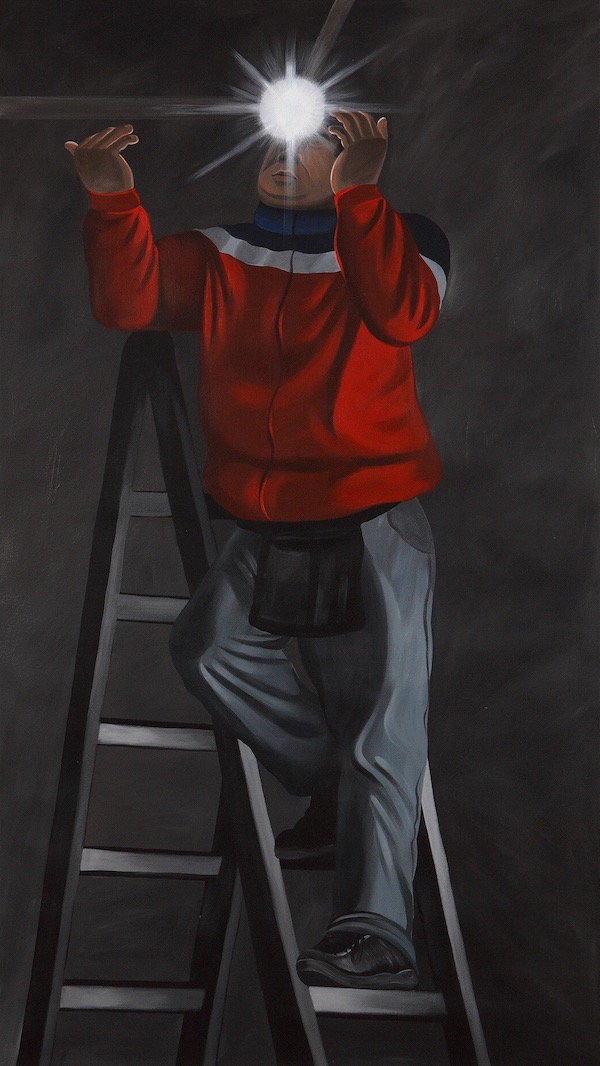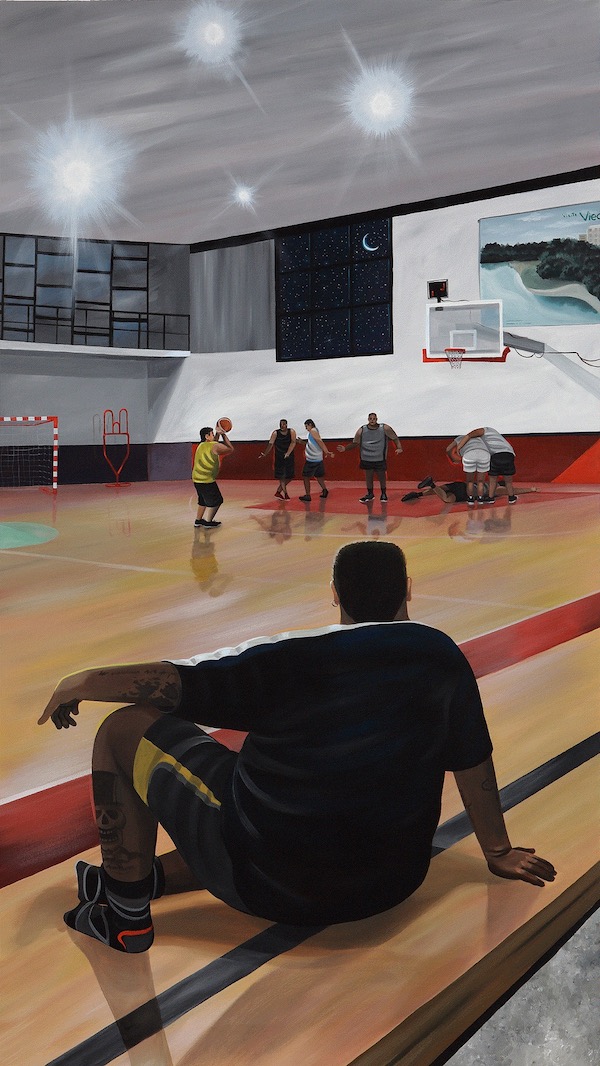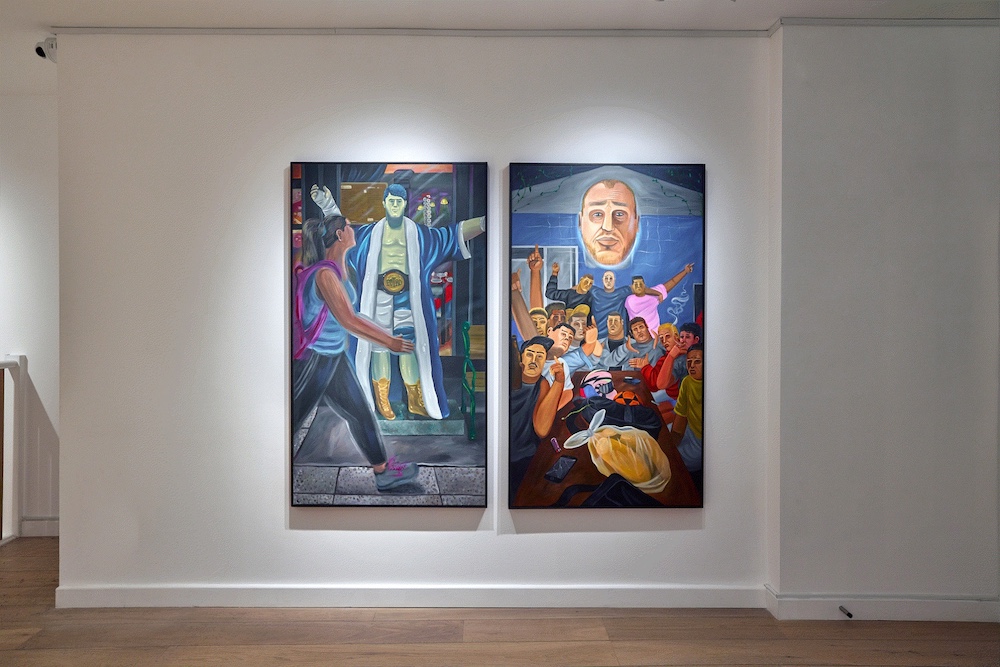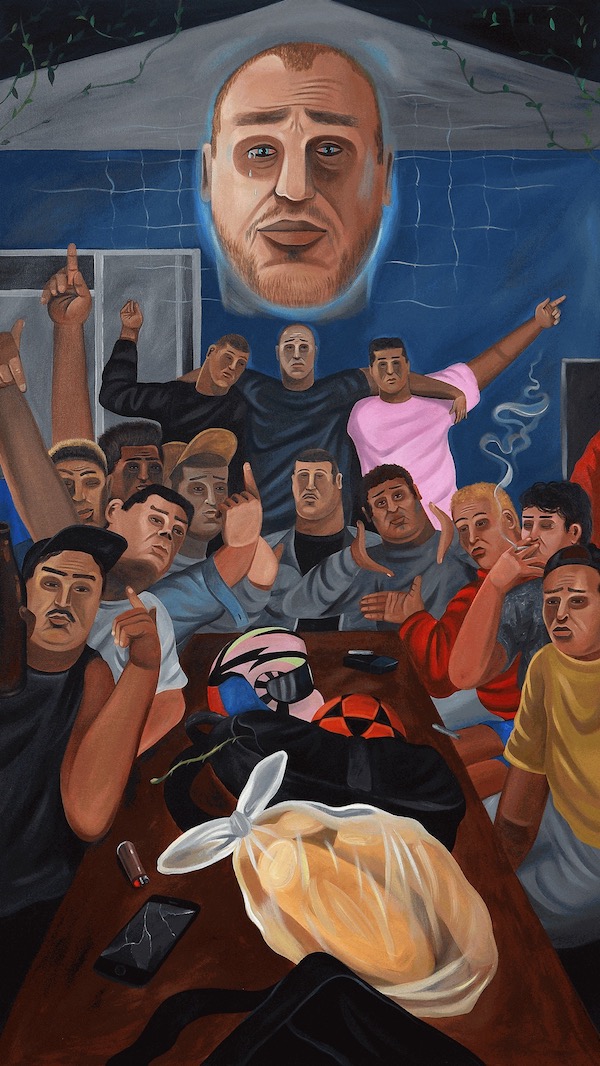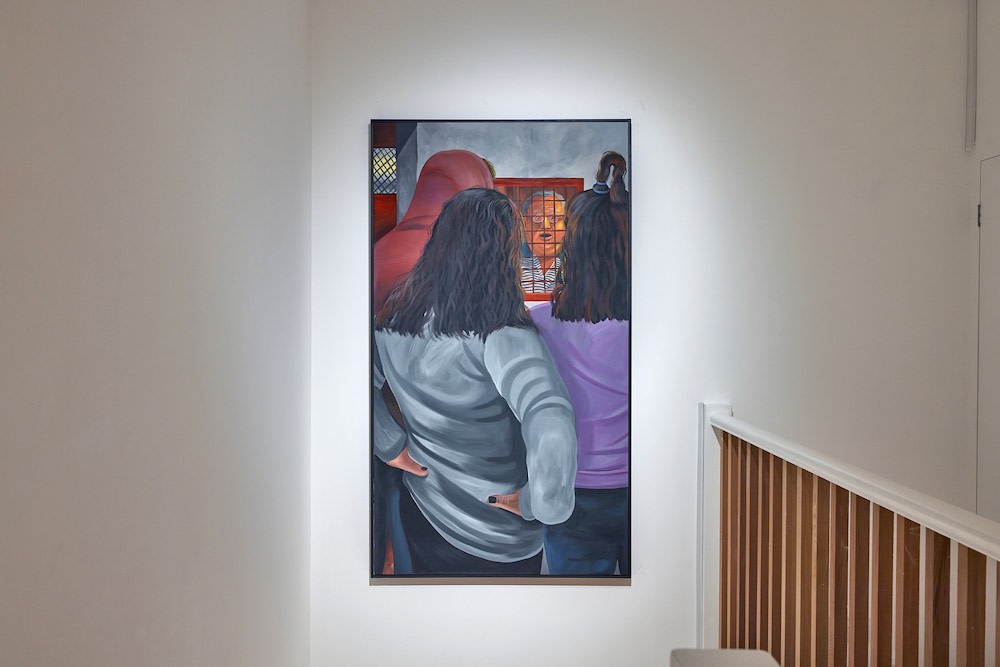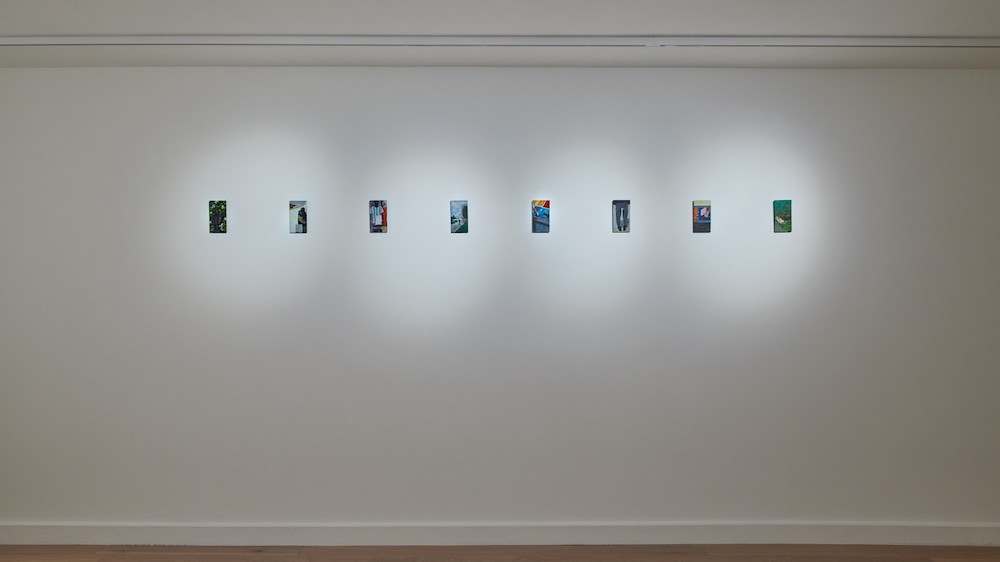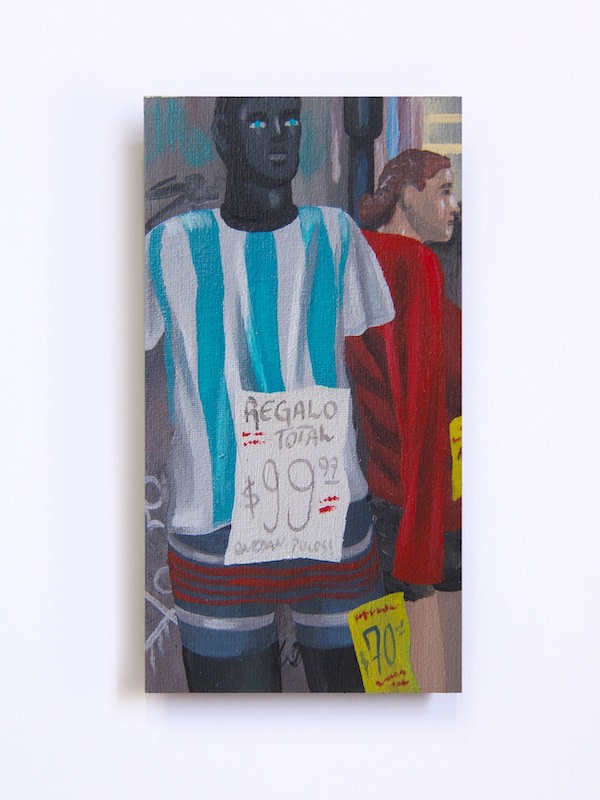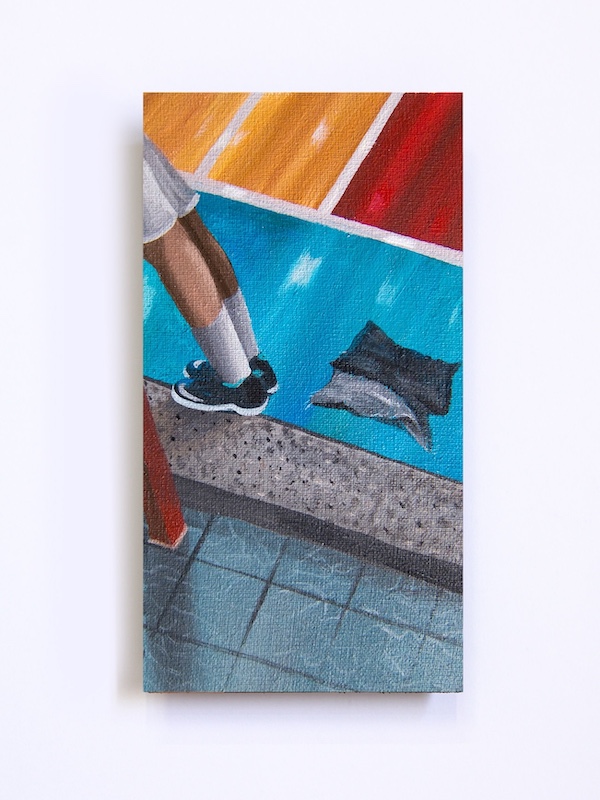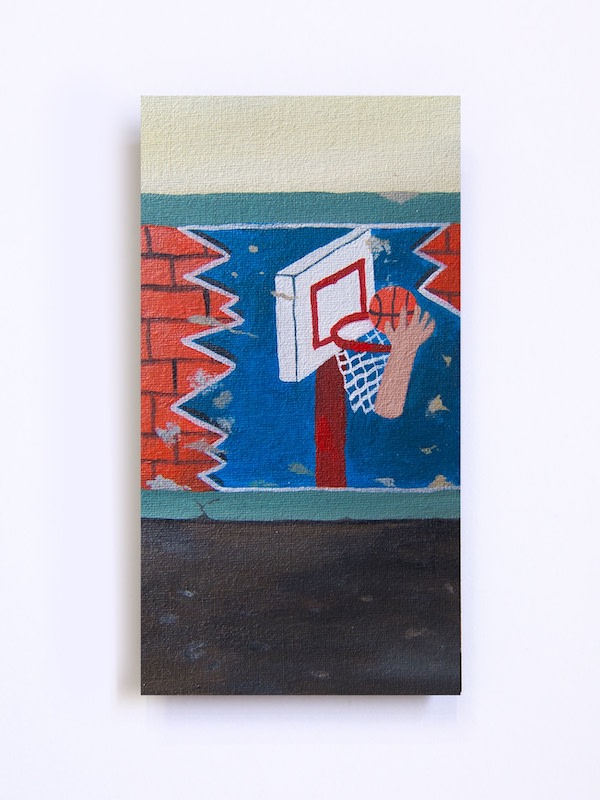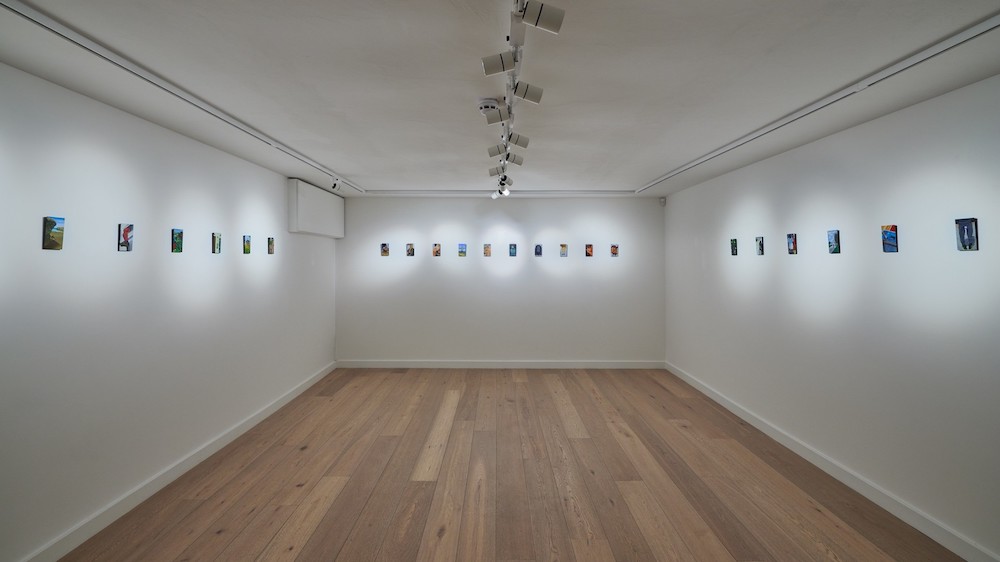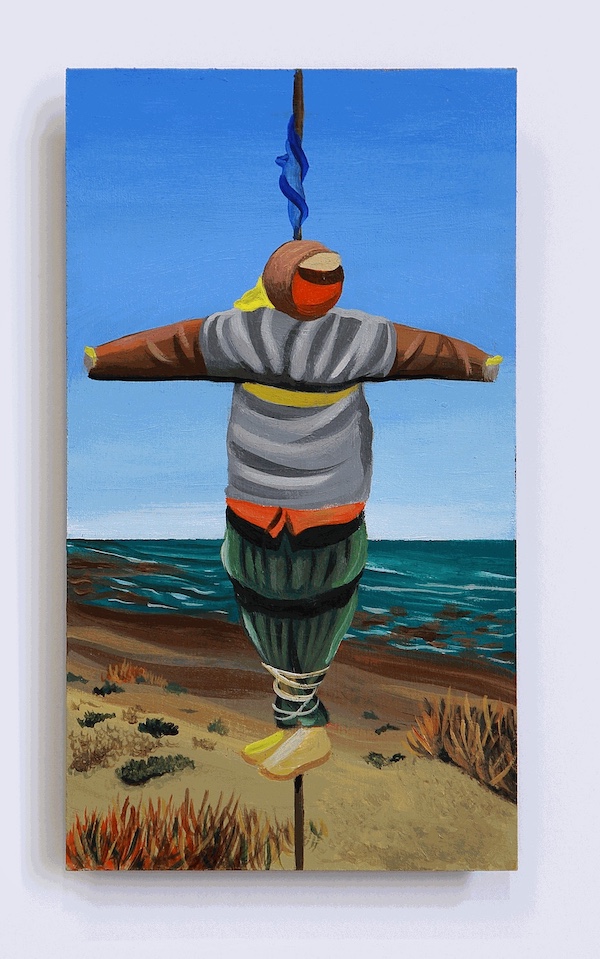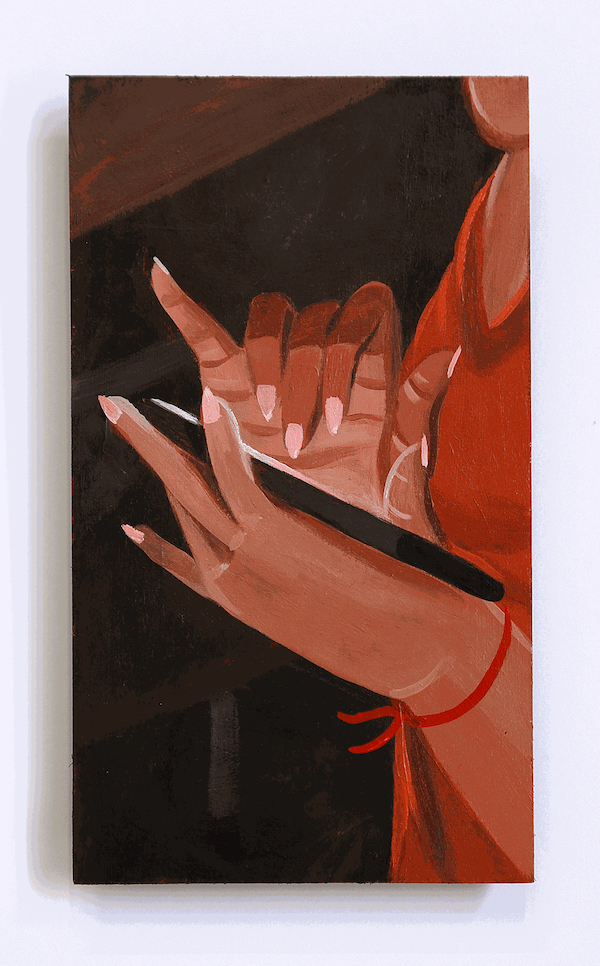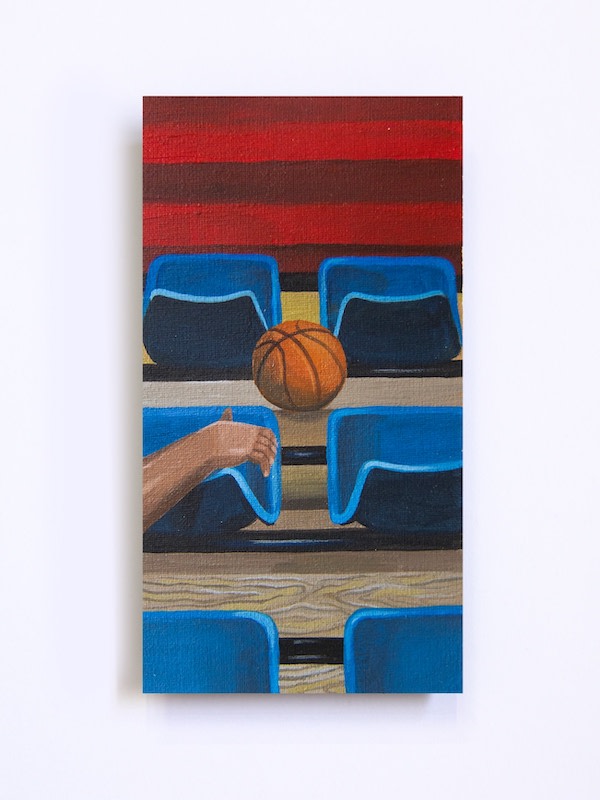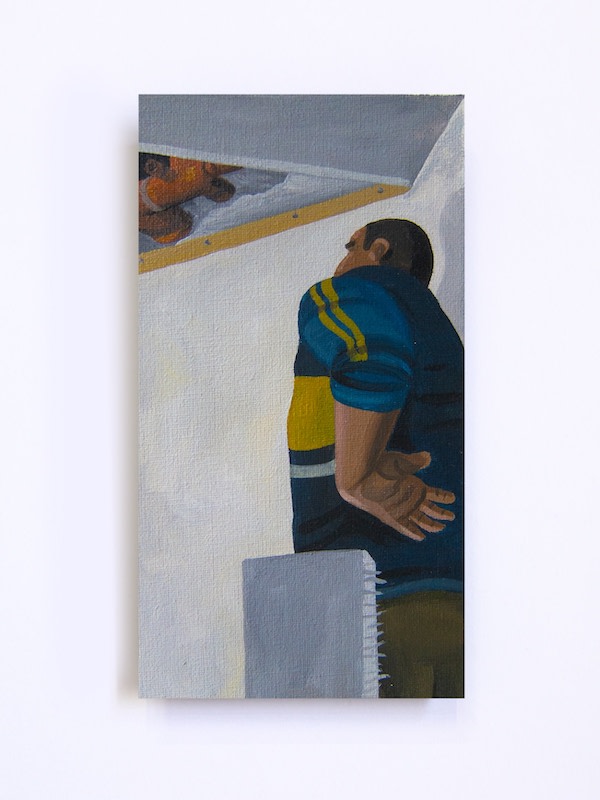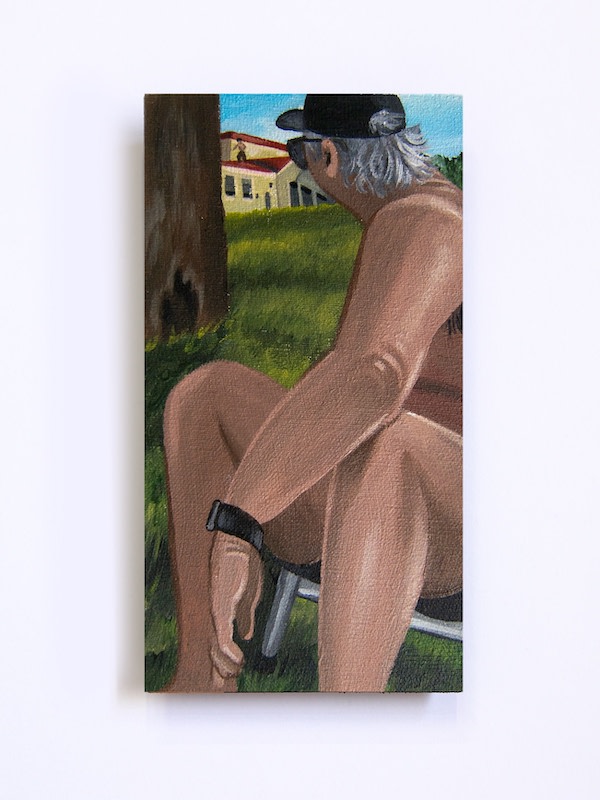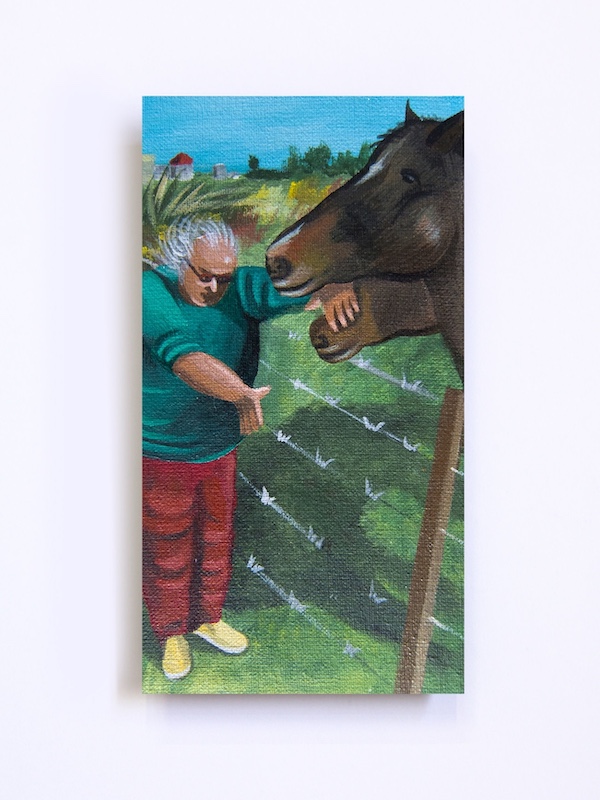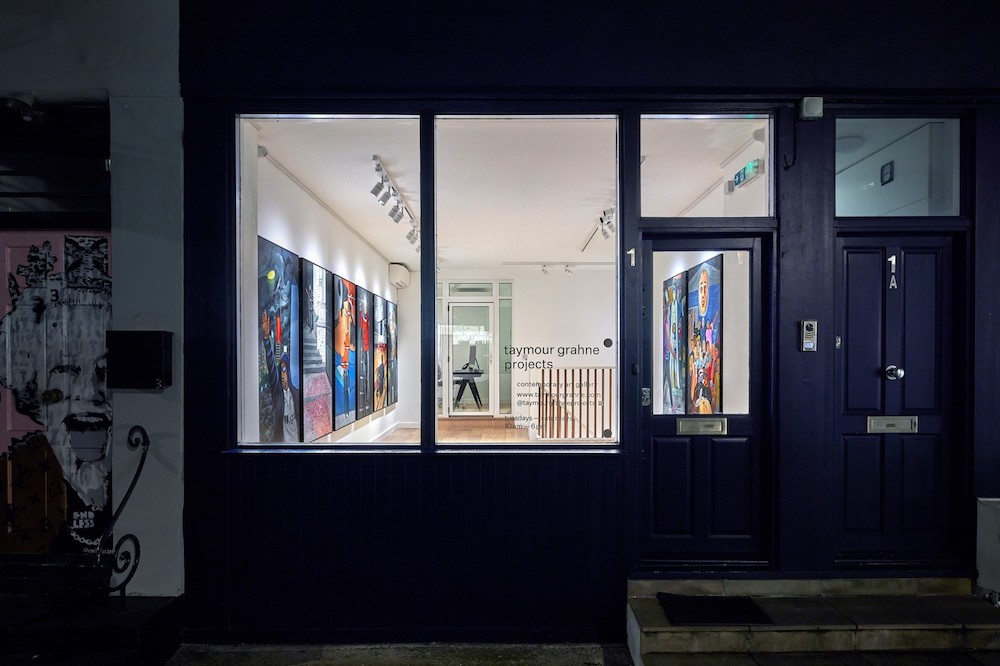Our friend, Argentinian artist Martin Kazanietz is currently having a London solo show with Taymour Grahne Projects at the gallery's Notting Hill space. On view from November 27th, 2021 until January 15th, 2022, Historias sin Fin (Histories Without End) is directly continuing onto the Historias Estancadas (Stagnant Stories) body of work he originally introduced with Institut Français in Madrid in early 2021.
When checking with Kazanietz back in May 2020 for our Art in Uncertain Times series, we found the artist stepping away from his football oriented, or even obsessed imagery, and simply documenting the life around him. "I started a project where I'm using random photos I find on my phone as a sketch and paint them in a 9:16 ratio like the phone screen. So now that football is dead, I felt like it was a great moment to make this shift," the artist we featured in our Fall 2018 issue told us then, probably not aware how far this concept will be pushed. And after introducing this body of work in Spain last year and accentuating its origins by displaying the work in "swipeable" palm-size and human-size installations, the artist continues examining the relationship between analog and digital media with a new presentation in the British capital. Taking into account the overabundance of digital imagery Kazanietz suggests that once repainted as physical objects and devoid of their context, the images of banal moments can be rich in symbolism and make interesting connections to contemporary lifestyles, memory making, and how we choose to look at our time in history.
By working from a quick phone photo of everyday life moments, the artist is hoping to provoke the viewer to consider which of their own photos can be used in a similar way. Suddenly attributing seemingly insignificant snaps with new values and presenting them in a new light, this approach instantly reevaluates our own correlation with certain events, experiences, attitudes, rituals, and human relationships. With the origins of this concept being at the early day of the pandemic, when Kazanietz moved to the remote Patagonia region, the newly discovered way of appreciating mundane moments has a more profound effect that gets intensified with the simplicity or commonness of the depicted scene. Transferred on a human scale canvas or meticulously rendered on a phone-size format, the otherwise insignificant experiences are earning poetic quality that transcends the customary perception. Portraying the random passers-by and their often clumsy or misfortunate episodes as important, Kazanietz employs the overused phone photography as a familiar vehicle to propose an alternative, more invested way of looking at our precious time in history. —Sasha Bogojev



